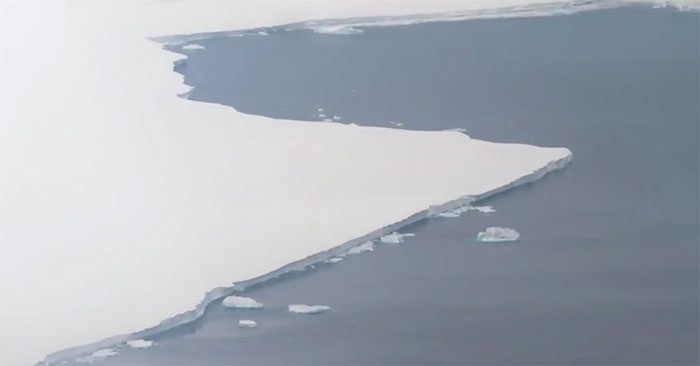The British Antarctic Survey announced on March 13th the release of the first footage of a gigantic iceberg that broke off from the Brunt Ice Shelf in January 2023.
The iceberg, named A81, has an area of approximately 1,550 km2 and broke away about a decade after the first cracks appeared, drifting in the Weddell Sea. This is the second significant separation recorded in two years. While iceberg calving is a natural process in the frigid Antarctic, it can still devastate the surrounding environment.
A81 is drifting 150 km away from its previous attachment to Antarctica. The footage from the British Antarctic Survey (BAS) captured from above demonstrates the immense size of A81, resembling an endless iceberg even when viewed from above. However, what is observable is only a portion of the iceberg’s mass; the majority lies beneath the water’s surface, with thicknesses reaching hundreds of meters.
BAS had to relocate the entire Halley Research Station to avoid being separated and drifting away with A81. The station was moved 23 km in 2016 after satellite data and high-precision GPS instruments indicated that the cracks along the Brunt Ice Shelf were expanding.

A81 is drifting 150 km away from its previous attachment to Antarctica.
Not only do massive icebergs like A81 threaten human activities, but they can also significantly impact local ecosystems. “As they melt, icebergs will release a wealth of nutrients that can benefit the growth of small plants, such as phytoplankton at the base of the ocean food web,” explained ecologist Geraint Tarling at BAS.
“However, the negative aspect is that large-scale melting will release vast amounts of freshwater into the ocean, reducing salinity and making the water unsuitable for many plankton species. These impacts can then propagate further up the food chain, affecting fish, birds, seals, and whales,” Tarling added.
The BAS team continues to closely monitor A81 along with other icebergs in the region, including A76a, to assess any potential risks they may pose. A81 is expected to drift along the Antarctic coastal current, while A76a is heading toward several islands. With an area of 3,200 km2, A76a is currently the largest iceberg on the planet, twice the size of A81.


















































